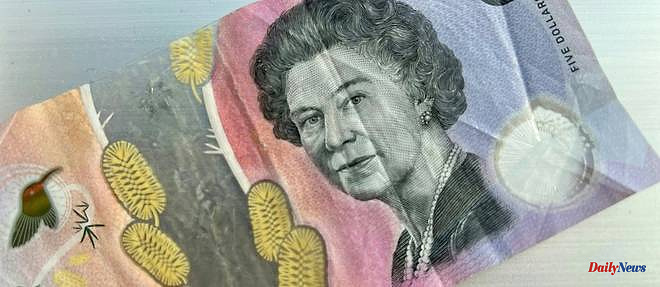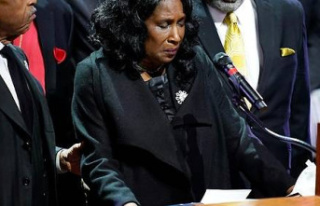British sovereigns will disappear from banknotes in Australia, where the portrait of Elizabeth II will be replaced on new five-dollar notes with a design honoring indigenous culture, the country's central bank announced on Thursday.
The decision not to feature the effigy of Charles III on the five-dollar note means that eventually no longer a single monarch will be represented on the paper currency.
The Central Bank, however, has not mentioned plans for the face of the Queen, which appears on some coins in circulation.
The death of Elizabeth II on September 8 was marked by a day of national mourning in Australia, a member country of the Commonwealth whose official head of state is King Charles III, represented by a governor general.
But some indigenous groups denounced the destructive consequences of British colonization, calling for the abolition of the monarchy.
In 1999, a referendum on the issue saw the Republicans narrowly defeated.
The central bank has said its decision is backed by the centre-left Labor government of Prime Minister Anthony Albanese, which favors a possible move towards an Australian republic.
The Reserve Bank of Australia (RBA) said Indigenous people will be consulted on a new design that "honors the culture and history of early Australians".
Designing and printing the new banknote will take "a number of years", she said. Banknotes bearing the likeness of the late Queen already in circulation will continue to be legal tender.
The disappearance of the effigy of the sovereigns was hailed by the Australian Republican Movement (ARM), which pointed out that indigenous peoples predated British colonization by 65,000 years.
"Australia believes in meritocracy and the idea that someone can be on our currency because of their bloodline is irreconcilable, as is the idea that they can be our head of state by birthright. “, said Craig Foster, president of ARM.
“To think that an unelected king should be on our coinage in place of First Nations chiefs and elders and prominent Australians is no longer justifiable in the hour of truth, reconciliation and ultimately peace. formal, cultural and intellectual independence," he added.
Mr Foster stressed that such symbols are important to Australians.
"This decision by the RBA stems from recognition of the important place of First Nations Australians in our national history."
"Australians deserve to see themselves, and only them, reflected in our Constitution, our system of government and all national symbols, including our currency."
British sovereigns have appeared on Australian banknotes since 1923 and until 1953, the year of the coronation of Elizabeth II, they were present on all denominations.
The Queen's face adorned the one pound note and then the new one dollar note from 1966. This first dollar note also featured images of Aboriginal rock paintings and carvings and designs inspired by a bark painting by indigenous artist David Malangi Daymirringu.
Since 1992, Australians have been able to admire the Queen's features on the polymer $5 note.
Three months ago, the governor of the central bank, Philip Lowe, indicated that he had begun discussions with the government to find out whether to give up replacing the image of the queen with a portrait of King Charles III.
02/02/2023 04:37:09 - Sydney (AFP) - © 2023 AFP












